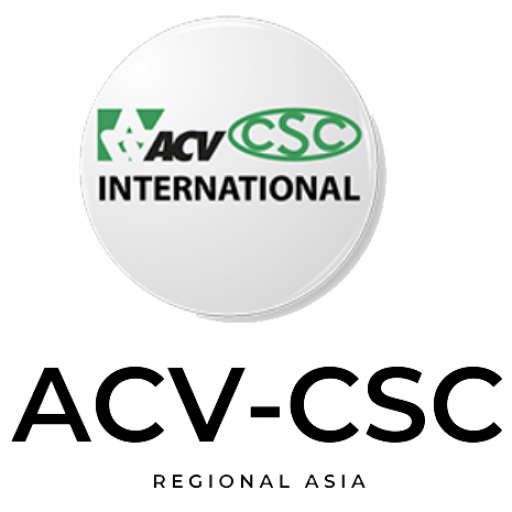Pofile of CBA PT C-Site Texpia PT C-Site Texpia is a company that operates in the field of making ready-made clothing or Garments and Accessories. Manufacturers of ready-made clothing such as t-shirts, joggers, sweaters, children's clothing, women's and men's clothing. PT C-Site Texpia has its full address at Kampung Warung Nangka Rt. 003 Rw.05, Ciasem Baru Village, Ciasem District - Kab. Subang, West Java 41256.
TEXPIA C-SITE CLA ANALYSIS
- Best Practice Freedom of Association
1.1. Articles 1:5,6 and 7 recognize the existence of trade unions, independent
membership of unions and trade union officials. This PKB fully respects workers’
freedom to choose to become members of one of the 2 unions or even choose not to
join a union.
1.2. Article 5 clearly recognizes 3 labor representations (SP Garteks, SPTP and LKS Bipartit) as
employee representatives
1.3. Article 6:3 The company will deduct employee wages for union contributions based on the
union members’ agreement with the union
1.4. Article 7 paragraph 1: Employers will not take actions that are detrimental to workers which
are caused by and or related to the Trade Union, whether as administrators or as members.
1.5. Article 7 paragraph 4: Employers are aware that the act of closing the company (lock-out) is
not in accordance with the spirit of industrial relations, therefore it will be avoided, except in
urgent circumstances that cannot be avoided
1.6. Article 7 paragraph 9: Trade Unions/Labour Unions can display the Trade Union/Labor Union
organization flag, side by side with the Red and White flag, Company flag, and K3 flag.
1.7. Article 23:1 “Secretariat space for Workers Unions to easily carry out organizational activities
within the company with permission from the company”
1.8. Article 32: “Every employee at PT. C-Site Texpia was given the freedom to organize. If there is
an invitation to activities outside the company related to the union, the company is obliged
to provide dispensation…” - Best Practice on Wages
2.1. Article 12:4i “Wages for Contract Employees are regulated and mutually agreed upon
in the Employment Agreement (Contract Letter between the Company and
Employees and valid for the duration of the Contract) and paid at a minimum in
accordance with the applicable UMK”
2.2. Article 12:6. Every employee who works full time or is absent for any reason will be
given a Premium or Attendance Bonus of IDR. 150,000. This premium or bonus will be
lost if the employee is absent or absent for any reason during the current month.
Bad practice regarding wages:
2.3 Article 12 paragraph 1: The wage system is prepared by the Company based on location,
position, rank, responsibility, type of work, nature of work, length of service, working time,
experience and education level of employees, taking into account the applicable laws and
regulations.
Translated from Indonesian to English – www.onlinedoctranslator.com
2.4 Article 12 paragraph 2: The amount of wages and wage adjustments for each employee is
regulated and determined by the Board of Directors and/or Management taking into
account the principles of justice related to the responsibilities, work performance and
absence records of the employee concerned and assessed as a unit, taking into account the
applicable provisions.
2.5 Article 13:2 The period of educational suspension is a maximum of 1 (one) month, unless
waiting for a decision from PHI and as long as permission has not been given, the period of
suspension is a maximum of 6 (six) months and if there is no decision from PHI, then the
Company is not obliged to pay wages The employee concerned (a case that has not been
legally decided should not be subject to sanctions, it should be the principle of presumption
of innocence.
2.6 Article 13:4 “If it later turns out that the violation referred to in paragraph 1 (one) of this
Article is not proven, the Company is obliged to restore its good name/rehabilitation in
writing”
2.7 Article 45:1:If an employee does not come to work without written permission from the
superior and without a reason acceptable to the Company, the employee is declared absent.
*. This article has the potential to be detrimental because it does not mention the number of
temporary days in Law no. 06 of 2023 concerning Job Creation article 154 A point j:
Workers/Labourers are absent for 5 (five) working days or more in a row without written
information accompanied by valid evidence and have been properly summoned by the
Employer 2 (two) times and written; Article 56 paragraph 3: Employees who refuse layoffs
must write a letter of rejection including reasons no later than 7 working days after receiving
the layoff notification letter.
2.8 Article 56: 3: Employees who refuse layoffs must write a letter of rejection including reasons
no later than 7 working days after receiving the layoff notification letter.
*. UU no. 06 of 2023 concerning Job Creation article 151 paragraph (3) In the event that the
Worker/Labourer has been notified and refuses the Termination of Employment Relations, the
settlement of the Termination of Employment Relations must be carried out through bipartite
negotiations between the Employer and the Worker/Labourer and/or the Worker/Labor
Union. - Best and Bad Practices on Social Security
3.1. Article 15:2 d and e: Workers are included in Pension Guarantee and Job Loss
Guarantee(note: no further description about JKP) - Best Practices on Gender
4.1. Article 23:3 “The company provides a lactation room and equipment for employees who
are breastfeeding so that they can continue to provide exclusive breast milk to their
children”
4.2. Article 25:2: For employees who are on maternity leave during collective holidays/annual leave,
the employee’s annual leave rights will not be reduced.
4.3. Article 26:4: Extension of Maternity and Maternity Leave can be granted based on dangerous
conditions for Female Employees, which are explained in the Certificate of the Doctor or
midwife who treats them, with Fixed Wages in accordance with article 8 (eight) concerning
Wages during illness.
Bad Practice on Gender:
4.4. Article 27 : 3: If the Worker/Labourer deliberately takes leave rights too close to the birth period,
the remaining leave rights remain at 1.5 (one and a half) months.
4.5. Article 30: 3 “At any time the Company may carry out examinations of Female Employees who
are Permitted to Not Work During Menstruation, by carrying out a Physical Examination at the
designated Clinic together with the appointed Company Representative” (review: potential
inconvenience and violation of privacy rights, especially not it is clearly stated that the officers
must be women. Menstrual leave must be the full right of female workers) - Best and Bad Practice regarding K3, including elements of Climate Change and Just
Transition
Best practices
5.1. Article 11 paragraph 2a: Treat everyone fairly based on applicable legal provisions, without
discriminating against gender, race, skin color, age, religion, marital status, sexual orientation,
veteran identity and status, physical disability and disability ( disability), caste, social and
ethnic background, nationality, political beliefs and other factors. Therefore, the basis for
consideration in carrying out the recruitment of new employees, payment of wages and
allowances, promotions, termination of employment or retirement must not be based on
discriminatory matters as mentioned above, but must be based on the employee’s ability to
work in carrying out his duties.
5.2. Article 23 paragraph 4: Occupational health is very important so companies provide clinics
and paramedics so that worker health can be achieved optimally.
5.3. Article 23 paragraph 5: Companies provide suggestion boxes as a means for employees to
provide suggestions or input and convey complaints to superiors or management.
Clarification:
There were only SPTP and Bipartite witnesses to the PKB signing, no Garteks?
- About
- About2
- Activities
- Agreement / Collaboration
- Benchmarking CBA
- Benchmarking CBA F HUKATAN
- Benchmarking CBA FPE
- Benchmarking CBA FSB GARTEKS
- Benchmarking CBA FSB KAMIPARHO
- Benchmarking CBA FSB KIKES
- Benchmarking CBA of PT Indonesia Wacoal
- Benchmarking CBA PT Shin Hwa Biz 2 (SHB 2)
- Benchmarking CBA PT. Ching Luh Indonesia
- Benchmarking CBA PT. Hwaseung Indonesia
- Benchmarking CBA PT. Parkland World Indonesia 1
- Benchmarking CBA PT. Parkland World Indonesia 2
- Benchmarking CBA PT. Parkland World Indonesia 6 Rangkasbitung
- Benchmarking CBA PT. Pertiwi Indomas
- Benchmarking CBA PT. Ricky Putra Globalindo
- Campaign
- Event
- Event 2024
- Issues
- Join Us
- Landing Page
- Newsroom
- Project2
- Targeted MNCs

